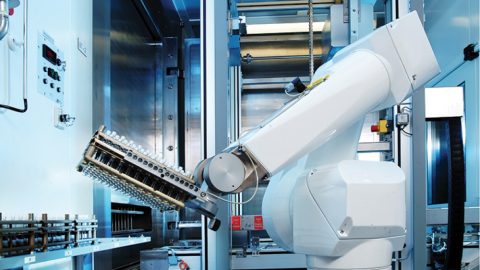
Illustration (Source: Internet)
With 4.0 technology, “smart pharmaceutical factories” will no longer produce batch pharmaceuticals (Batch Process) but a continuous production process performed by smart devices and tools capable of ability to communicate with each other (Machine to Machine Communication) and with humans (Human Machine Interface).
Thanks to this connection, the collected data will be circulated throughout the entire system. Next, the “cloud algorithm” supported by the “block chain” technology will decentralize the storage of information in data blocks linked together for analysis purposes. And finally, Big data automatically gives notices and instructions to managers to assist them in decision making. For the pharmaceutical industry, these guidelines play a significant role in improving production efficiency, because there is not much room for quality improvement.
There are 4 types of big data analysis:
Thanks to them, managers no longer have headaches because they have to work with a large amount of data but just make decisions based on the available analysis. The suggestions not only help solve current problems but also provide new directions for businesses to improve production processes. This approach has opened up new potential for innovation for pharmaceutical businesses.
Besides Big data, artificial intelligence (AI) is also a technology worth mentioning. More and more pharmaceutical companies are affiliated with startups with the direction of pharmaceutical research and professional access through the use of artificial intelligence. The production of drugs will become more consistent and easier with existing experience, while minimizing product defects caused by manual operations.
Artificial intelligence is being applied in drug research and development in several ways – to develop better diagnostics or to find new biomarkers; to identify treatment goals; and to design new drugs. One of the most common uses is reorientation of drugs: exploring new indications of existing drugs or finding new drugs for end-stage patients. With artificial intelligence, when conducting drug testing in phase II for another indication, we do not need to repeat phase I tests or toxicity tests, this will save a lot of costs and time for business. It can be said that artificial intelligence in particular and the application of technology 4.0 in general have been and will continue to contribute significantly to promote medical development.
Productivity and Quality Office